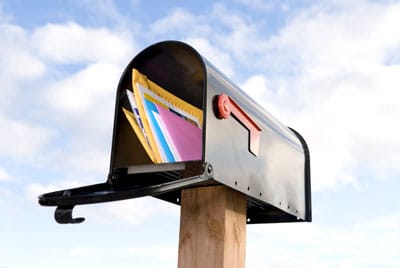Direct Mail Marketing
Direct mail marketing is a traditional advertising technique that involves sending promotional material directly to potential customers’ physical mailboxes. Despite the popularity of digital marketing, direct mail still remains a relevant and effective way to reach out to potential customers. If well created, it has greater opportunity for multiple eyeball contact and message retention, leading to action. In this article, we will discuss what it is, how it works, and why it’s still relevant today.
What is Direct Mail Marketing?
Direct mail marketing is a form of advertising that involves sending promotional material to potential customers via physical mail. This could include postcards, letters, brochures, catalogs, and other marketing collateral. The goal is to capture the attention of potential customers and entice them to take a desired action, such as making a purchase, visiting a website, or calling for more information.
 How Does It Work?
How Does It Work?
Mail marketing campaigns typically start with identifying a target audience. This could be based on demographics, geographic location, interests, or past purchasing behavior. Once the target audience is identified, marketers can create a promotional message that resonates with that audience.
The promotional material is then printed and mailed to the target audience. Marketers can choose to use their own mailing lists or rent lists from third-party providers. The promotional material may include a call to action, such as a discount code or a limited-time offer, to encourage recipients to take immediate action.
Why is Direct Mail Still Relevant?
After the explosive rise of digital/email marketing, it became less effective because good messages need to competed with the noise of the unwanted. Direct mail still remains relevant for several reasons. First, direct mail has a higher response rate than most digital marketing channels. According to a study by the Data & Marketing Association, direct mail has a response rate of 4.9% for prospect lists and 9% for house lists, compared to email’s response rate of 1%.
Second, direct mail offers a tangible experience that digital marketing cannot replicate. Recipients can physically hold and interact with the promotional material, which can make a lasting impression.
Finally, direct mail allows marketers to target specific audiences with precision. By using data analytics, marketers can identify the characteristics of their most valuable customers and use that information to create targeted direct mail campaigns.
While the US Postal regulations are bureaucratically created and therefore voluminous and complex, we at CSRT have become experts at understaning how use it effectively and protibably.
Direct Mail vs Email Marketing
Email marketing has lost a lot of its effectiveness because even a good message can be missed or even viewed as spam/or junk.
A well designed and quality printed Direct Mail item has a far greater chance of meeting eyeballs twice! Once on the envelope or packaging and a second time when the content is examined. The US postal service even offers another eyeball opportunity through the rapid growing Informed Delivery Service. This provides a third eyeball opportunity and also opens the door into the digital world without the customer needing to key in a link.
There is no delete button for Direct mail. Physically tossing something still comes after a second thought or a pause. With all the spam emails we receive, the delete button carries no guilt and no regrets. 🙂

Tips for Creating Effective Direct Mail Campaigns
Creating an effective direct mail campaign requires careful planning and execution. Here are some tips to help you create a successful direct mail campaign:
- Define Your Target Audience
Identifying your target audience is the first step in creating a successful direct mail campaign. Use data analytics to understand the characteristics of your most valuable customers, such as age, income, and location. This information can help you create targeted direct mail campaigns that resonate with your target audience.
- Create Compelling Content
Your promotional material should be well-designed and include a clear call to action. The outer packaging should be attractive, inviting and informative. It should deliver the main message with enticement to view and read the content.
The content should then be written in a way to hold the attention.
Use persuasive language to entice recipients to take immediate action, such as making a purchase or visiting a website. Consider including a discount code or a limited-time offer to encourage immediate action.
See our article on Three Rules for Mail Piece Design
- Use High-Quality Printing
The quality of your printing can have a significant impact on the success of your direct mail campaign. Use high-quality paper and ink to ensure that your promotional material looks professional and stands out in the recipient’s mailbox.
- Measure Your Results
Tracking the success of your direct mail campaign is essential to understanding what works and what doesn’t. Use analytics to track response rates and conversions, and adjust your strategy accordingly.
Conclusion
Direct mail marketing is a tried and true advertising technique that still remains relevant today. By targeting specific audiences with precision and creating compelling content, marketers can use direct mail to capture the attention of potential customers and drive conversions. If you’re considering direct mail marketing as part of your advertising strategy, be sure to follow the tips outlined in this article to create a successful campaign.

 How Does It Work?
How Does It Work?